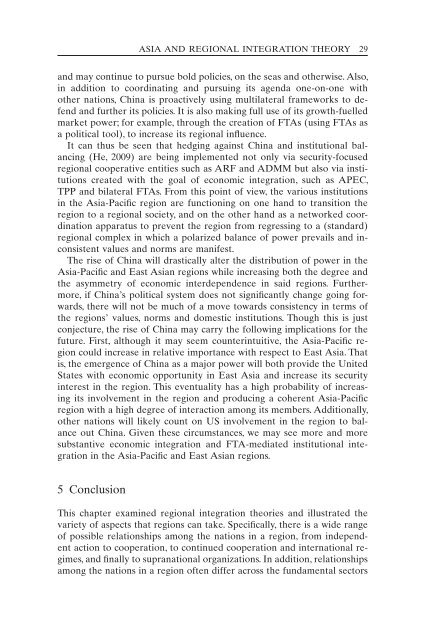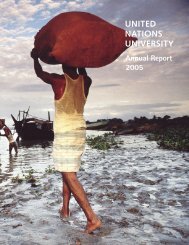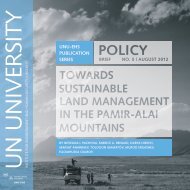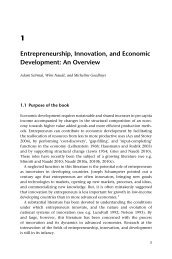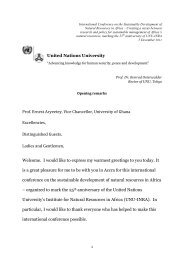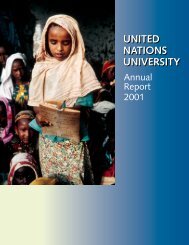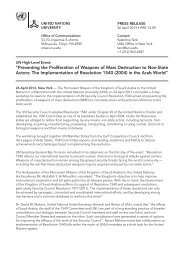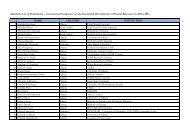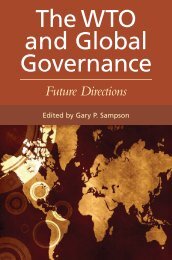Sample Chapter - United Nations University
Sample Chapter - United Nations University
Sample Chapter - United Nations University
Create successful ePaper yourself
Turn your PDF publications into a flip-book with our unique Google optimized e-Paper software.
Asia and regional integration theory 29<br />
and may continue to pursue bold policies, on the seas and otherwise. Also,<br />
in addition to coordinating and pursuing its agenda one-on-one with<br />
other nations, China is proactively using multilateral frameworks to defend<br />
and further its policies. It is also making full use of its growth-fuelled<br />
market power; for example, through the creation of FTAs (using FTAs as<br />
a political tool), to increase its regional influence.<br />
It can thus be seen that hedging against China and institutional balancing<br />
(He, 2009) are being implemented not only via security-focused<br />
regional cooperative entities such as ARF and ADMM but also via institutions<br />
created with the goal of economic integration, such as APEC,<br />
TPP and bilateral FTAs. From this point of view, the various institutions<br />
in the Asia-Pacific region are functioning on one hand to transition the<br />
region to a regional society, and on the other hand as a networked coordination<br />
apparatus to prevent the region from regressing to a (standard)<br />
regional complex in which a polarized balance of power prevails and inconsistent<br />
values and norms are manifest.<br />
The rise of China will drastically alter the distribution of power in the<br />
Asia-Pacific and East Asian regions while increasing both the degree and<br />
the asymmetry of economic interdependence in said regions. Furthermore,<br />
if China’s political system does not significantly change going forwards,<br />
there will not be much of a move towards consistency in terms of<br />
the regions’ values, norms and domestic institutions. Though this is just<br />
conjecture, the rise of China may carry the following implications for the<br />
future. First, although it may seem counterintuitive, the Asia-Pacific region<br />
could increase in relative importance with respect to East Asia. That<br />
is, the emergence of China as a major power will both provide the <strong>United</strong><br />
States with economic opportunity in East Asia and increase its security<br />
interest in the region. This eventuality has a high probability of increasing<br />
its involvement in the region and producing a coherent Asia-Pacific<br />
region with a high degree of interaction among its members. Additionally,<br />
other nations will likely count on US involvement in the region to balance<br />
out China. Given these circumstances, we may see more and more<br />
substantive economic integration and FTA-mediated institutional integration<br />
in the Asia-Pacific and East Asian regions.<br />
5 Conclusion<br />
This chapter examined regional integration theories and illustrated the<br />
variety of aspects that regions can take. Specifically, there is a wide range<br />
of possible relationships among the nations in a region, from independent<br />
action to cooperation, to continued cooperation and international regimes,<br />
and finally to supranational organizations. In addition, relationships<br />
among the nations in a region often differ across the fundamental sectors


